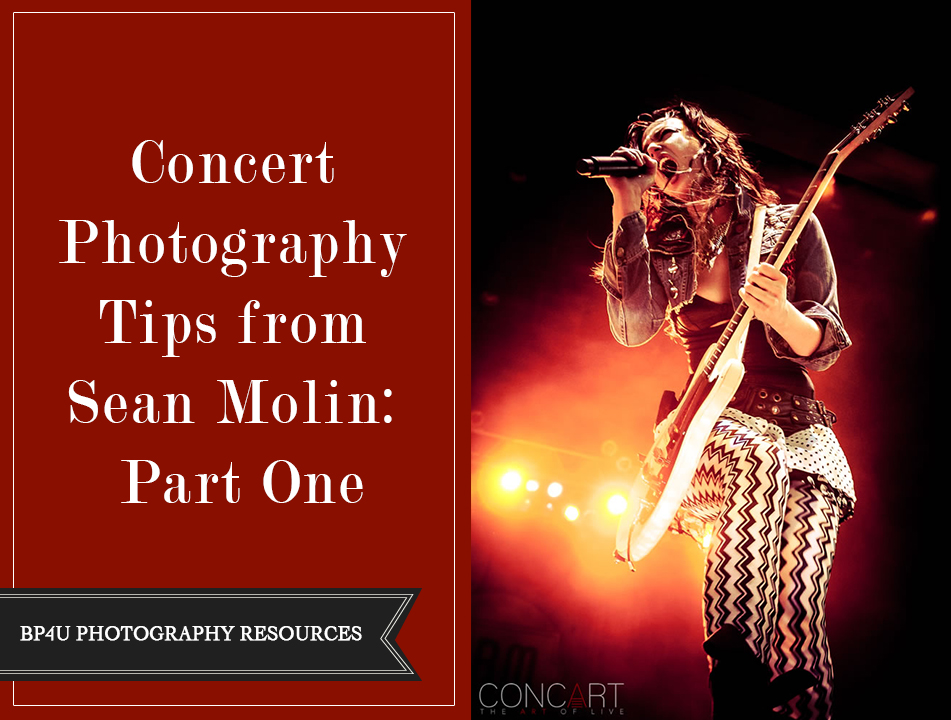 We’re happy to have guest blogger Sean Molin on the BP4U blog with us today. Sean is an Indiana-based photographer who’s been committed to the craft since 2008. He specializes in lifestyle photography using both digital and analog cameras. While his primary areas of focus are weddings, engagements, high school senior portraits and modern family photography, his true passion and niche is in live music and concert photography. In fact, he has an entire brand and publication devoted to it: concART | The Art Of Live.
We’re happy to have guest blogger Sean Molin on the BP4U blog with us today. Sean is an Indiana-based photographer who’s been committed to the craft since 2008. He specializes in lifestyle photography using both digital and analog cameras. While his primary areas of focus are weddings, engagements, high school senior portraits and modern family photography, his true passion and niche is in live music and concert photography. In fact, he has an entire brand and publication devoted to it: concART | The Art Of Live.
His work has won competitive awards and been featured in several magazines, including Popular Photography, Premier Guitar, Revolver, and on countless blogs and webcasts from all over the globe, including Scott Kelby’s The Grid.
Sean says he is very technical minded — almost to a fault — and has a passion for gear as well as the art. Today he’s sharing five of his best concert photography tips to help you get brag-worthy shots at your next live event.
Concert Photography Tips: Part One
Concert photography is an animal. A beautiful, untamed, unpredictable — and sometimes vicious — animal. We go to concerts for the experience. It’s the energy, the excitement, and of course, the music. But we can’t take any of it home with us. Well, there’s always the photos. It doesn’t matter whether you’re in the pit with your point-and-shoot or if you’ve got two DSLRs slung over your shoulders; there are some stead-fast things you can always do to make sure you get the best photos possible.
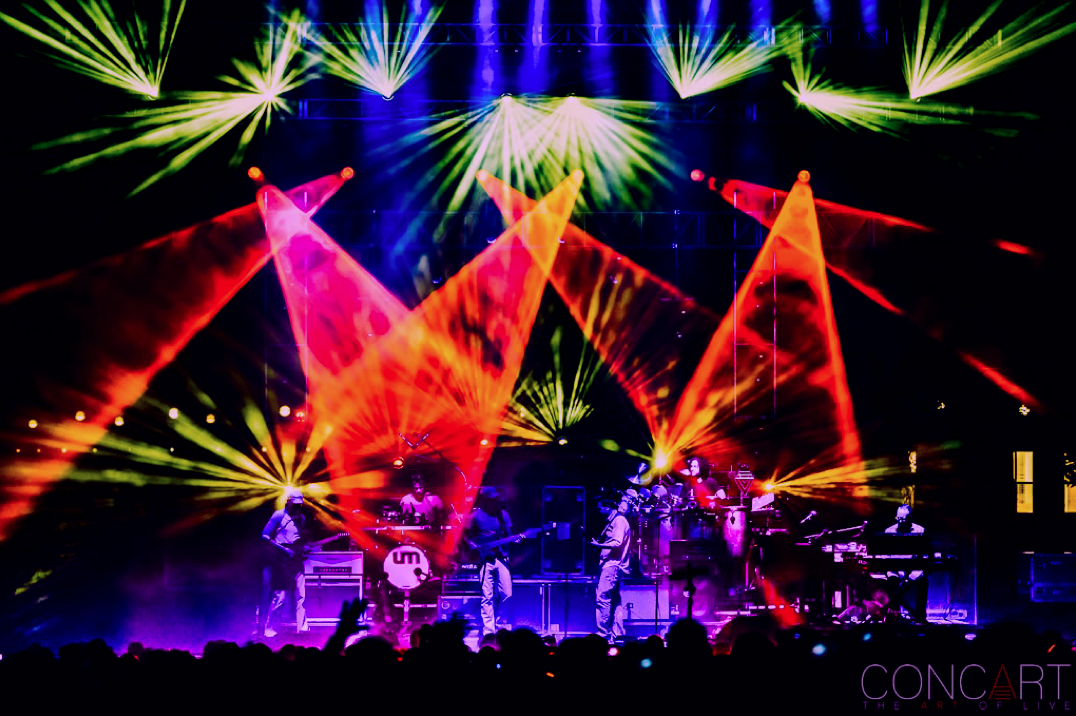 Umphrey’s McGee — 135mm @ f/2.8, 1/200, ISO 400
Umphrey’s McGee — 135mm @ f/2.8, 1/200, ISO 400
1. Get in Manual Mode
Get your camera in manual mode. The last thing we want is your camera thinking it knows what’s going on. It doesn’t. The vast majority of live shows have stages that are very dark with very bright lights scattered about. Sometimes these lights move somewhat randomly; other times they stay exactly where they are. In either case, your camera’s meter will be fooled. Shoot in any form of automatic mode and your shots are going to range from almost pitch black to bright white and everything in between. Now that you’re in manual, the first thing you’ll do is prioritize your shutter speed. As you may know, when we increase the camera’s sensitivity to light (ISO) we can get digital artifacts called noise. One way we like to reduce this noise is to lower our shutter speeds so that we don’t have to have the sensor sensitivity so high. Well, when it comes to live music, we would much rather have our shot sharp with noise than to be blurry and noiseless. We can fix noise. We can’t fix a missed shot. So set your shutter speed first. What that needs to be depends on the band. If you’re watching some old blues legend who barely moves enough to blink, we could get down as low as 1/50th or 1/60th of a second. Do the band members sway a little to and fro? Maybe we need 1/160th. Is the rock star jumping all over the stage flinging sweat into the first several rows? Maybe 1/400th or even higher is required. Take a test shot with your best guess and then check the LCD screen to see if you were able to perfectly capture the action. Yes? Then let’s move on.
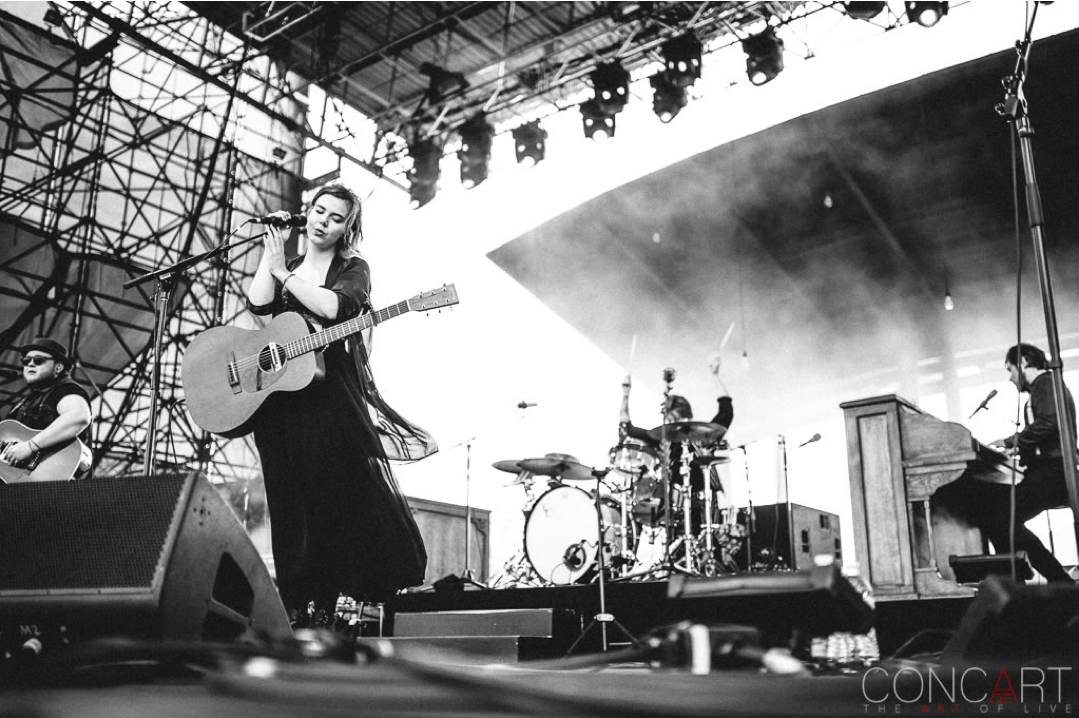 Of Monsters And Men — 35mm @ f/1.4, 1/400, ISO 100
Of Monsters And Men — 35mm @ f/1.4, 1/400, ISO 100
2. Keep Aperture Wide Open.
Aperture is the iris of your lens. We want it to be huge to let in as much light as possible. This is measured by the “f number.” The smaller the number, the larger the iris can get. If you have a choice of lenses for your camera, you want f/2.8 or larger (smaller number). When I’m in the pit, my lenses typically range from f/1.2 to f/2.8. Shooting in an incredibly dark bar or club with pretty bad lighting? I wouldn’t be caught dead without something faster than f/1.8. Does your fastest lens only go to f/4? It’s okay, your photos will just have more noise. Unless you’re shooting outside. Then it’s totally up to you when you have tons of light. I, personally, love the wide open look even in the daylight.
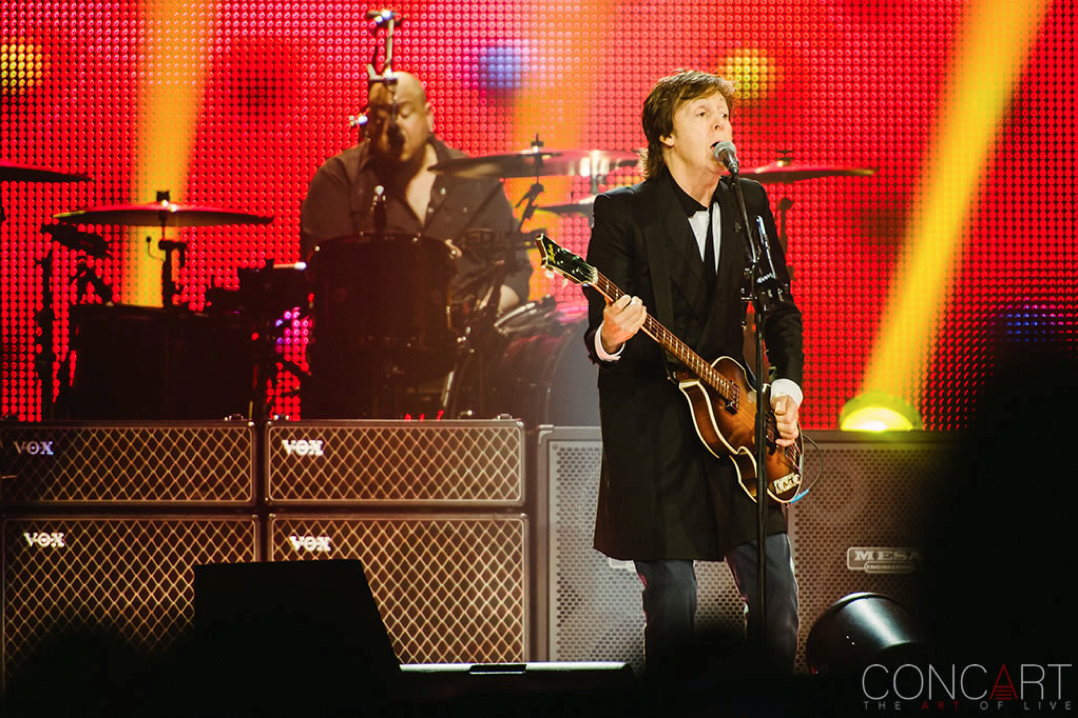 Paul McCartney — 400mm @ f/5.6, 1/250, ISO 2000
Paul McCartney — 400mm @ f/5.6, 1/250, ISO 2000
3. Set Your ISO
Your ISO is the last thing you set. Put it where it needs to be so you get the exposure you want. Typically, I’m paying attention to the band members’ faces. There are times to break the rules — such as when you want a silhouette — but for the most part, if you get their faces exposed properly, the rest falls in line. If you’ve got a slow lens or an older point and shoot, your ISO will get pretty high (ISO 3200, 6400, or even higher is likely). While you may be dismayed by the amount of noise, remember that live music is one of the more gear-dependent areas of photography. You’re just doing the best you can do. Don’t forget that images that are just going on Facebook don’t show as much noise anyway because they are smaller. Noise only gets more apparent the larger the image is displayed.
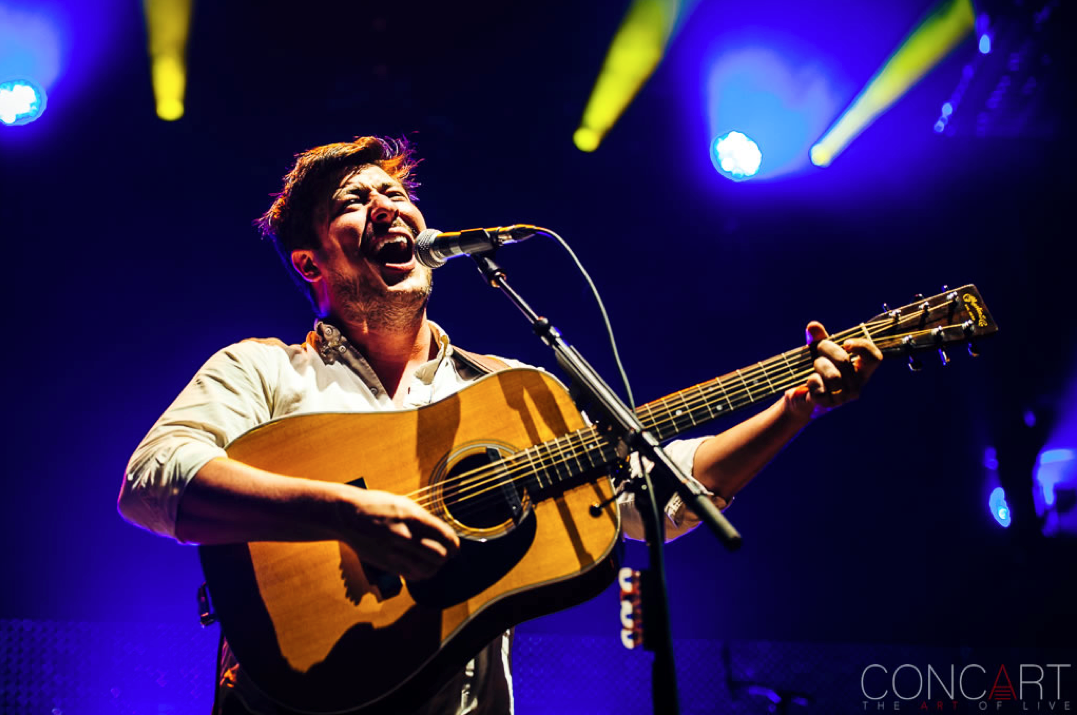 Mumford & Sons — 70mm @ f/2.8, 1/250, ISO 400
Mumford & Sons — 70mm @ f/2.8, 1/250, ISO 400
4. Avoid Microphones and Microphone Stands When Possible
While the general rules of composition apply to concert photography just as much as anything else, there are a few special considerations, with mic stands being the big one. Now, that doesn’t mean don’t take the shot just because a mic stand is in it. Sometimes “the perfect moment” has a mic stand in it. Sometimes the artists never move out from behind their stands. If this is the case — as it is very common with folk acoustic acts — you need to figure out which direction they look when they are pausing and moving their mouths away from the mic. Then go to the side where you can shoot from that angle. Then wait. Yes, even if you’re in a time crunch you need to wait for that perfect shot sometimes. Will the mic be in the shot? Yes. But if we can at least get a shot with their mouth or face unobstructed, I’d call it a success. Another particular mic-related concern is when shooting rap artists. They typically spend 90% of their show with a handheld mic buried in their face. You will absolutely have to wait for the few moments they put their arm down. Be ready for them, because it’s typical to not get many chances.
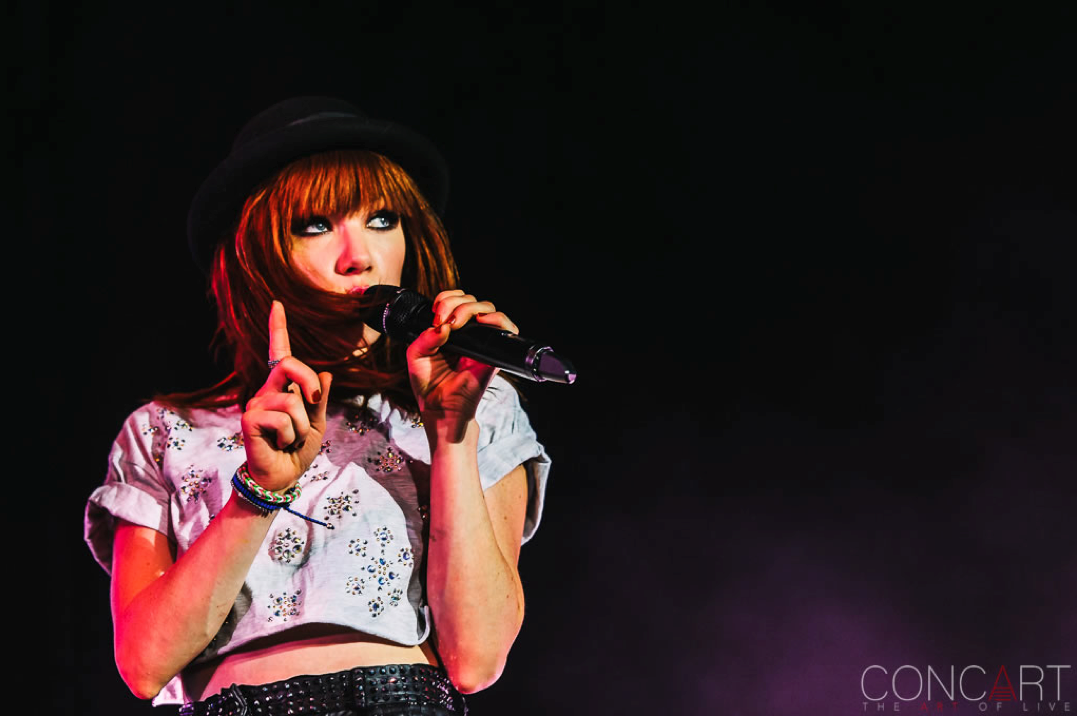 Carly Rae Jepsen — 165mm @ f/2.8, 1/400, ISO 800
Carly Rae Jepsen — 165mm @ f/2.8, 1/400, ISO 800
5. Shoot in RAW
If your camera allows you to do so, this is the setting you want to be in. Because live music tends to be very high contrast, we have very dark shadows and very bright highlights. Shooting in RAW gives us extra exposure data so we can pull details out of shadows and highlights in order to make the images look more “even.” If you shoot in JPEG and the band members’ skin is ghost white then you’re out of luck, but in RAW we might be able to save that by bringing the highlights down.
Want more of Sean? Find him on the web.
concART / Website / Facebook / 500px / Flickr / Twitter

